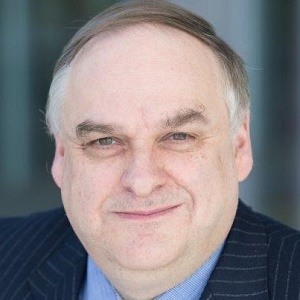Tolerance and enlightenment needed in solving today’s data management and governance problems …
And Yet it Moves…
Two thousand and fifteen marks the 400th anniversary of Galileo’s investigation by the Roman Inquisition at the instigation of the Pope Paul V for publishing his theory that the earth orbited the sun and not the other way around.
Galileo’s observations fundamentally changed the science of astronomy – but at the time they were considered so heretical to the teaching of the church that he was forced to “abjure, curse and detest” them on oath – he is rumoured to have muttered E pur si muove in Italian when placed under house arrest. We are now seeing a similar realization in corporate IT that most of the data that needs to be managed has at best an ever evolving schema and that the bulk of it is largely unstructured textual emails and chat.
Remember, remember! The 5th of November…

This year is also the 410th anniversary of “The Gunpowder Plot” in the UK – one of my claims to fame is that I was born in the same street as its most famous protagonist Guy Fawkes and went to the same school as him (albeit a few centuries later).
Being the CTO for financial services at MarkLogic I am sometimes regarded with the same suspicion as good old Guy in wanting to overthrow the established order of database management in this sector.
In truth, like many Yorkshiremen, Guy was really a mercenary and met the other plotters whilst fighting in Spain — where he took the Spanish name Guido – which was used to sign the documents that still survive today.
Nobody Expects the Spanish Inquisition!

Fawkes and Galileo both chose to challenge the established political and religious orders of their day and attracted scrutiny from the large networks of spies and informers deployed to report on dissent and plots to challenge the authorities.
Today enterprise architecture groups in large organizations perform a very similar policing role but sadly the effect is much more like the Monty Python sketch where the Inquisition run around chasing futile causes to defend a “technology standards list” that is riddled with exceptions — or a Target Operating Model that exists only in PowerPoint.
Recently I was invited by a solutions integrator partner to visit a prospect who had blindly followed its enterprise architecture standards for a NoSQL database. Unfortunately, the design review process had not considered the need to have ACID transactions and bitemporal schema evolution to deliver accurate trading positions and account balances — which the chosen platform did not support — so the whole process had to go back to square one.
Step Forward the Real Enterprise Architects
It is noteworthy that no internal enterprise architecture groups in financial services have ever affected significant organizational redesign. That distinction always goes to one of the major strategic consulting houses McKinsey, Bain, etc., that have been brought in by a new CEO to define the strategy and supporting KPIs.
McKinsey’s solutions are typically
- Fact-based
- Rigidly structured
- Hypothesis-driven
A former partner once described their modus operandi as, “When you strip away a lot of the high-minded language with which McKinsey dresses up its problem-solving process, it comes down to very careful, high-quality analysis of the components of the problem combined with an aggressive attitude toward fact gathering.” — The McKinsey Way 1999
In its 2015 Annual Global Banking review, McKinsey & Company recommended that banks must “Radically innovate data technology and architecture” in order to achieve “common data aggregation and reporting procedures.”
The firm surmised that
The skills and technology needed to create a compelling digital experience are often in short supply. That is why many banks also need to focus on a second programmatic change: building digital capabilities at scale. An assessment of the bank’s current competitive circumstances and an inventory of its current skills can suggest the right places to focus. There are four functions where many banks will want to invest:
- Data and IT architecture: Where digital lives
- Operations: A step-function reduction in costs
- Risk management: Into the machine age
- Distribution: Data-driven acquisition
Indeed, McKinsey then went on to detail the features of the technology platform that we already provide at MarkLogic where “all kinds of data, structured and unstructured, internal and external, are gathered,” and that “the user of data defines the rules when extracting data…”
Beware the Organizational Zealots…
Clearly at MarkLogic we are flattered and heartily endorse McKinsey’s analysis of what needs to be done to innovate and enable flexible data architecture at enterprise scale. However, organizations need to beware the dogma that some consulting groups follow that treat IT only as a series of cost objects rather than being critical to business innovation and optimization.
The notion that technologists can be pigeonholed solely on their technical skills without taking into account their accumulated business knowledge is a very dangerous one and has been shown to be deeply flawed in a number of banks that find themselves overrun by a posse of offshore SI’s in a race to the bottom.
Don’t Get Hung Drawn & Quartered
As well as being forced to abjure his beliefs, Galileo was placed under house arrest by the Pope for most of the rest of his life. Guy Fawkes was tortured on the rack to extract his confession before being hung drawn and quartered. Don’t let these two gents be harbingers of your fate.
When your local enterprise architects come to perform their inquisition on your beliefs make sure you book the room with the “comfy chair until lunchtime,” the soft cushions and ideally “a cup of coffee at eleven” as they will probably not be aware of McKinsey’s recommendations above and they usually focus solely on functional or SOA type models — so be ready to challenge that orthodoxy.
Whilst we should not forget that Guy Fawkes was the quartermaster and executor of a major terrorist plot, in the modern world of political spin and policy wonks he is now often toasted in the UK as “the last man to enter Parliament with honest intentions” — he at least rolled up his sleeves and tried to get something done.
Across most of the UK, there is still a tradition of putting an effigy of Guy Fawkes on the bonfire to try and reinforce maintenance of the status quo – except at St Peter’s School York where it is a school rule to spare him that ignominy.
In Galileo’s case, on 31 October 1992, Pope John Paul II expressed regret for how the Galileo affair was handled and issued a declaration acknowledging the errors committed by the Catholic Church tribunal that judged Galileo’s papers. However plans to erect a statue of him within the Vatican as a final admission of error were quietly shelved by Pope Benedict XVI in 2009 presumably because it suggested an example of papal fallibility.

Need for Science & Enlightenment
The IT profession is often (and rightly) castigated for chasing the latest technology or process fad rather than focussing on what is really necessary for the business it has to support.
This dogma usually arises out of fear and ignorance – I know of no major corporation that knows
- What technology types, hardware/software physical or virtual and the licenses it owns
- How they are combined to form stacks and environments
- How they change when new instances are spun up or shut down
- How many database servers and the various patch levels they have
- Where data comes from and goes to both within the corporation and its trading partners
Without dogma, both technologists and their management resort to the village gossip cycle of opinions, rumours and ultimately splinter into blinkered religious sects. My former colleague at BAML John O’Hara (also ex-JPMC) has regularly referred to Monty Python’s sketch in the film Life of Brian about the People’s Front of Judea as the other “splitters” sat around in a Roman amphitheatre as the best illustration of how technology architectural factions really behave in a corporation.
CIOs often speak of trying to innovate and drive cultural change – this can never happen until we have consistent + accurate ways of capturing and analyzing the structure and evolution of IT architectures we construct — and the supporting facts that McKinsey & Co. love to analyze.
At MarkLogic we stand ready and able to provide the data management capabilities to finally crack the nut of enterprise infrastructure architecture topology and standards capture – both along the complexity axis and the event-based update/dependency pipeline that is often forgotten.
Remember, remember! The fifth of November, The Gunpowder treason and plot; I know of no reason Why the Gunpowder treason Should ever be forgot!

Rupert Brown
Rupert Brown has spent more than 25 years in the Investment Banking sector working for a number of Tier 1 US and European Investment Banks designing and delivering Global Application, Market Data and Infrastructure Solutions.
He has been instrumental in the evolution of the derivatives market platforms in Fixed Income, Equities and Commodities, the transition from host based to distributed and mobile technologies and deciphering the core data requirements of Regulators and Operational Risk managers in the post Crunch era.
He graduated from Imperial College London and is a Senior Member of the Association for Computing Machinery (ACM).
Comments
Topics
- Application Development
- Mobility
- Digital Experience
- Company and Community
- Data Platform
- Secure File Transfer
- Infrastructure Management
Sitefinity Training and Certification Now Available.
Let our experts teach you how to use Sitefinity's best-in-class features to deliver compelling digital experiences.
Learn MoreMore From Progress
Latest Stories
in Your Inbox
Subscribe to get all the news, info and tutorials you need to build better business apps and sites
Progress collects the Personal Information set out in our Privacy Policy and the Supplemental Privacy notice for residents of California and other US States and uses it for the purposes stated in that policy.
You can also ask us not to share your Personal Information to third parties here: Do Not Sell or Share My Info
We see that you have already chosen to receive marketing materials from us. If you wish to change this at any time you may do so by clicking here.
Thank you for your continued interest in Progress. Based on either your previous activity on our websites or our ongoing relationship, we will keep you updated on our products, solutions, services, company news and events. If you decide that you want to be removed from our mailing lists at any time, you can change your contact preferences by clicking here.



